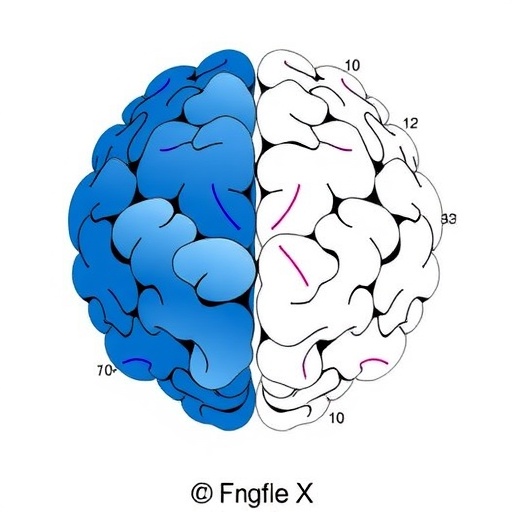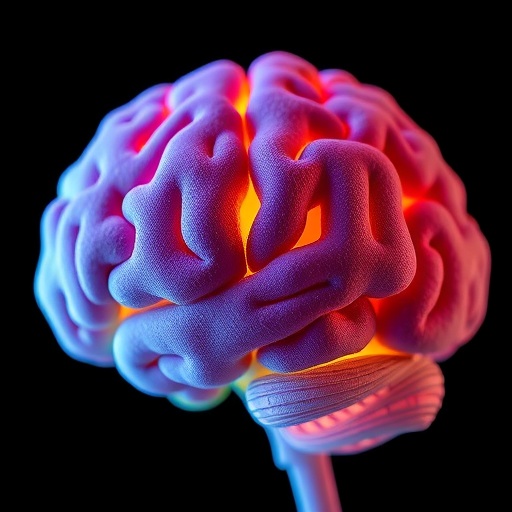Two pioneering studies from Karolinska Institutet in Sweden have shed new light on how somatic mutations—genetic alterations acquired during an individual’s lifetime—affect the ageing of muscle tissue and blood vessels. Published in the prestigious journal Nature Aging, these investigations not only reveal the functional consequences of these mutations but also open promising avenues for understanding and treating age-related degenerative conditions. By focusing on mutations accumulated in cells of the musculoskeletal and vascular systems, the researchers provide compelling evidence that these genetic changes contribute significantly to the decline of muscle strength and the premature ageing of blood vessels associated with chronic conditions.
Somatic mutations differ fundamentally from hereditary genetic changes. They occur sporadically as environmental damages or random DNA replication errors during cell division throughout life, creating a mosaic of genetically distinct cells within tissues. Although somatic mutations have long been recognized as a root cause of oncogenesis, their broader influence on tissue function and ageing has remained ambiguous. The Karolinska teams have addressed this uncertainty by demonstrating how these mutations impair tissue regeneration and contribute to functional deterioration in muscles and blood vessels, essential systems for mobility and cardiovascular health.
In the first study, investigators revisited a mutation famously implicated in Hutchinson-Gilford progeria syndrome (HGPS), a severe premature ageing disorder caused by aberrant expression of a faulty protein called progerin. Originally discovered by Professor Maria Eriksson at Karolinska Institutet, this mutation leads to abnormal nuclear architecture and accelerated cellular senescence. Strikingly, the team found that the same mutation also arises as a somatic alteration in the vascular walls of patients suffering from chronic kidney disease (CKD). This discovery links the molecular pathology of a rare genetic disorder with the vascular complications characteristic of a common, age-associated illness.
.adsslot_0cvKyQC4LD{ width:728px !important; height:90px !important; }
@media (max-width:1199px) { .adsslot_0cvKyQC4LD{ width:468px !important; height:60px !important; } }
@media (max-width:767px) { .adsslot_0cvKyQC4LD{ width:320px !important; height:50px !important; } }
ADVERTISEMENT
By employing advanced genomic sequencing techniques, the researchers identified clusters of cells harboring progerin-producing mutations along blood vessel linings in CKD patients. These mutated cell populations propagate and form localized foci that can exacerbate vascular damage, leading to early onset of vascular stiffness, endothelial dysfunction, and tissue degeneration. Complementary animal models reinforced these observations, revealing how such mutated cells expand and compromise vascular integrity, effectively accelerating the ageing phenotype within the circulatory system. This not only clarifies the molecular underpinnings of vascular ageing in chronic diseases but hints at possible therapeutic targets to mitigate these effects.
Collaborative clinical efforts anchored by nephrologist Professor Peter Stenvinkel facilitated this research by providing a unique biobank of well-characterized patient material. The availability of such comprehensive samples allowed for detailed molecular and phenotypic analyses linking somatic mutations to clinical manifestations in CKD. This translational approach exemplifies how integrating basic and clinical sciences can unravel complex disease mechanisms and connects the dots between rare genetic disorders and prevalent pathological conditions, enhancing our understanding of human ageing biology.
The second study shifts focus to the somatic mutations arising in skeletal muscles during their natural regeneration processes. Muscle tissue undergoes dynamic cycles of damage and repair throughout life, relying on muscle stem cells to repopulate and maintain tissue function. However, this regenerative capacity declines with age, raising questions about molecular contributors to this phenomenon. Using an innovative mouse model engineered to accumulate somatic mutations specifically during muscle regeneration, researchers demonstrated that increased mutation burden leads to compromised muscle recovery following injury.
Affected muscles in these models showed notable decreases in fiber size and muscle mass, alongside reduced functional strength as assessed by grip strength tests. The accumulation of mutations appeared to disrupt normal cell proliferation and differentiation pathways, effectively impairing the muscle’s ability to replace damaged fibers with healthy ones. These findings substantiate a direct causal link between somatic mutational load and functional decline in skeletal muscles, offering a mechanistic explanation for age-related sarcopenia and frailty seen in older adults.
Together, both studies underscore the broader principle that somatic mutations, far from being mere bystanders or exclusive contributors to cancer, play critical roles in tissue ageing and functional decline. They act as molecular determinants that diminish the regenerative potential of vital organs and propagate cellular dysfunction. This paradigm shift prompts a reassessment of how ageing and chronic diseases are conceptualized, highlighting genetic mosaicism as an intrinsic factor shaping tissue health over time.
Moreover, the work showcases how studying rare genetic diseases like progeria provides invaluable insights into common age-related conditions. The molecular parallels drawn between progerin-induced vascular damage in progeria and similar somatic mutations found in CKD patients illustrate the translational power of rare disease research. Such insights pave the way for innovative biomarker development and targeted therapies aimed at mitigating mutation-driven tissue degeneration.
Looking ahead, elucidating the full spectrum and impact of somatic mutations across various tissues holds great promise for the biomedical field. Developing sensitive tools to detect and quantify these mutations in living tissues could enable early diagnosis and personalized interventions designed to preserve tissue function and improve healthspan. Furthermore, unraveling the molecular mechanisms that allow mutated cells to evade clearance and expand within tissues may yield novel strategies to limit their detrimental effects.
These groundbreaking investigations into somatic mutation accumulation and its consequences mark a significant contribution to the gerontological landscape. By connecting genetic alterations occurring throughout life to declines in muscle strength and vascular health, the Karolinska Institutet researchers provide a new framework for understanding ageing as a dynamic, tissue-specific genetic mosaic. As the global population ages, such fundamental knowledge is essential for developing effective interventions that promote healthy ageing and combat age-associated morbidities.
In summary, these studies reveal that the accumulation of somatic mutations in key tissues not only disrupts cellular homeostasis but actively drives functional deterioration typical of ageing. Whether manifested in the vascular senescence of chronic kidney disease patients or the decreased muscle regeneration capacity in senescent rodents, mutation-induced cellular dysfunction represents a crucial determinant of ageing pathology. As research progresses, targeting these mutational processes may transform our ability to treat a wide array of degenerative diseases, underscoring the clinical importance of somatic mutations beyond their oncogenic role.
Subject of Research: The role of somatic mutations in muscle and vascular ageing, focusing on mutation-induced impairments in tissue regeneration and function.
Article Title: Induced somatic mutation accumulation during skeletal muscle regeneration reduces muscle strength
News Publication Date: 20 August 2025
Web References:
https://doi.org/10.1038/s43587-025-00882-6
https://doi.org/10.1038/s43587-025-00941-y
References:
Revêchon, G. et al. “Recurrent somatic mutation and progerin expression in early vascular aging of chronic kidney disease.” Nature Aging (2025). DOI: 10.1038/s43587-025-00882-6
Vrtačnik, P. et al. “Induced somatic mutation accumulation during skeletal muscle regeneration reduces muscle strength.” Nature Aging (2025). DOI: 10.1038/s43587-025-00941-y
Keywords: Gerontology, Somatic Mutation, Skeletal Muscle, Muscle Cells, Circulatory System, Progeria, Nephrology, Older Adults
Tags: ageing process and muscle strengthblood vessel ageing and degenerationchronic conditions and mutationsenvironmental impact on geneticsgenetic alterations in ageingKarolinska Institutet researchmusculoskeletal system and ageingmutations in body tissuesoncogenesis and somatic mutationssomatic mutations and healthtissue regeneration and ageingvascular system and health deterioration





